Articles
No Comments
By Voices
On 23, Dec 2015 | No Comments | In Frontline | By Voices
Harsh Realities: The British Army and the Problem of 1915
Dr Spencer Jones, University of Wolverhampton
At the beginning of 1915 Great Britain found herself locked into a major European war for the first time in over a century. This was a situation for which the country was not strategically, militarily, economically or psychologically prepared.
Five months of ferocious combat in 1914 had drained pre-war stocks of weaponry, ammunition and trained soldiers at an exponential rate, yet had resulted only in frustrating stalemate. The challenge that faced British politicians and generals in the New Year was how to devise a policy that contributed to the Allied war effort whilst taking account of Britain’s desperately limited resources.
British leaders were far from sanguine about the prospects of victory in 1915. Lord Kitchener, who had raged at the start of the conflict “Did they remember, when they went headlong into a war like this, that they were without an army, and without any preparation to equip one?” regarded the Western Front as a fortress that could not breached by direct assault. His view found favour amongst other members of the War Council including Prime Minister Herbert Asquith and Chancellor of the Exchequer David Lloyd George. Instead, British eyes looked elsewhere for the prospect of victory. The commander of the BEF in France, Field Marshal Sir John French, hoped that the fabled Russian ‘steamroller’ would turn the tide of war. Winston Churchill thought the answer lay in an offensive against the Ottoman Empire. Lloyd George even suggested removing the BEF from France and redeploying it to the Balkans. A sense of ‘wait and see’ prevailed towards policy on the Western Front.
Yet the policy makers soon found themselves trapped by the strategic reality of the war. The Germans had captured most of Belgium and occupied large, economically valuable swathes of France. At its closest point the German front line was just five days’ march from Paris. The presence of the invader was intolerable for the French and they were determined to drive them out. French commander Marshal Joseph Joffre expected the British Army to support these efforts to the utmost of its ability. Furthermore, on the Eastern Front, Russia and Serbia found themselves hard pressed by German and Austro-Hungarian offensives and appealed for support.
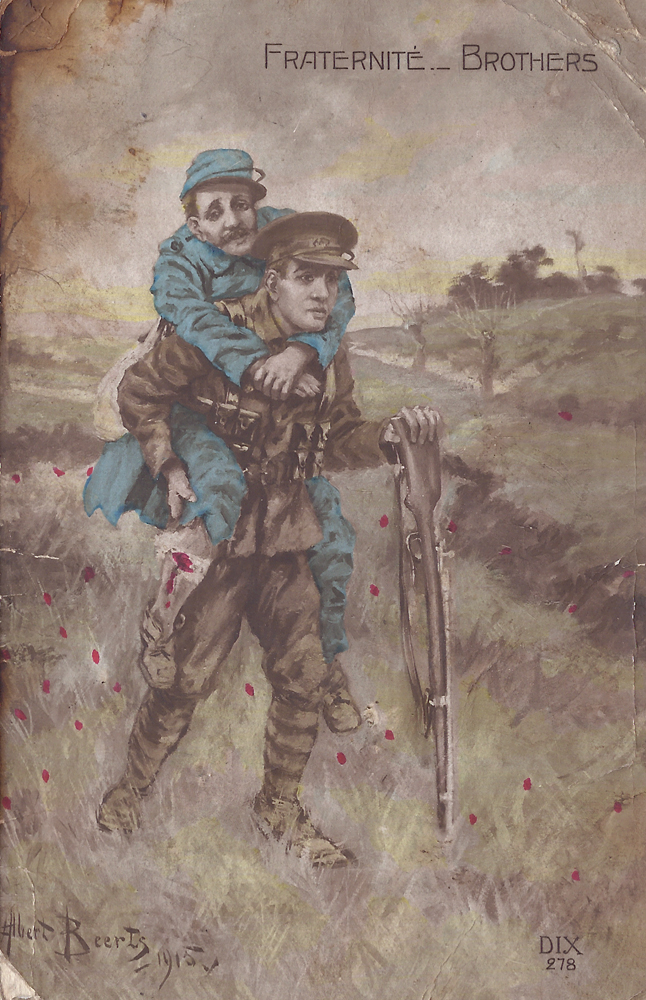 Britain could not stand idle whilst its allies fought for survival. The moral obligation weighed heavily. As early as April 1915 British diplomats reported that there was grumbling in St. Petersburg that “Britain will fight to the last drop of Russian blood”. Worse still, there was a growing body of evidence that Germany was seeking to conclude a separate peace with either France or, more probably, Russia, thereby breaking up the Triple Entente and greatly weakening the Allied cause. Britain could not afford to lose a major ally in 1915.
Britain could not stand idle whilst its allies fought for survival. The moral obligation weighed heavily. As early as April 1915 British diplomats reported that there was grumbling in St. Petersburg that “Britain will fight to the last drop of Russian blood”. Worse still, there was a growing body of evidence that Germany was seeking to conclude a separate peace with either France or, more probably, Russia, thereby breaking up the Triple Entente and greatly weakening the Allied cause. Britain could not afford to lose a major ally in 1915.
The strategic reality was that Britain had to fight in support of France, Russia and Serbia. Yet, as James Edmonds noted in the Official History, “the BEF was not in a condition to make the effort that our French Allies expected of the British Empire in a life or death struggle.” The BEF was still recovering from the blood-letting of 1914. The elite ‘Old Contemptibles’ who had stemmed the tide at First Ypres had paid a terrible price. By the end of the year the Regular army had suffered some 95,000 casualties, representing over 38% of its total pre-war strength. The British Army required respite, reinforcements and replacement equipment. Meanwhile, the New Armies being raised in Britain needed time to muster, train and prepare. This combination of regeneration and expansion taxed Britain’s military resources to the limit. There were simply not enough trained soldiers to simultaneously reinforce the Regular Army and provide experienced cadres for the New Armies; similarly there was not enough equipment for either force. As a result the army was forced to fight with substandard weaponry, finding itself short of machine guns, deploying artillery of Boer War vintage, and equipping its soldiers with a bewildering variety of inadequate hand grenades. These material weaknesses were compounded by the near universal inexperience of officers and men. Officers who had begun the war commanding battalions of one thousand men now found themselves leading brigades of four thousand soldiers, whilst brigadier-generals now led all-arms divisions of some 18,000 men. A similar pattern of promotion existed at all levels of the army. There was no time for formal training. Newly promoted officers had to learn in the field, but this was a hard school where lessons were paid for in soldiers’ blood.
The stark military reality was that the British Army needed time and was not ready for major operations in 1915. Indeed, Kitchener harboured hopes that the New Armies would not be deployed to France until 1917. Yet, as has been shown, the strategic situation demanded immediate action. Initially, the War Council cast about for alternatives to fighting on the Western Front but the failure at Gallipoli, the mounting pressure on Russia and the insistent demands of the French forced it to commit ever greater resources to Europe. Rather like a workman whose clothes have become trapped in the machine he is operating, Britain was slowly but surely dragged ever deeper into the main theatre of operations. This brought the BEF face to face with the problems of modern warfare against a first rate opponent.
Contrary to popular belief, the British Army was not bewildered by the conditions of the Western Front. The army had experience of trench warfare in the Boer War (1899 – 1902) and had spent much time and effort studying the lessons of the Russo-Japanese War (1904 – 1905). In early 1915 the BEF constructed replica German trenches and carried out live-fire bombardments against them to determine their resilience to artillery fire. The results, although not completely conclusive, were promising and suggested that with sufficient weight of fire the German defences could be breached. The relative success of the opening attack at the Battle of Neuve Chapelle (10 – 12 March 1915) seemed to confirm these findings and resulted in a degree of optimism amongst senior British officers.
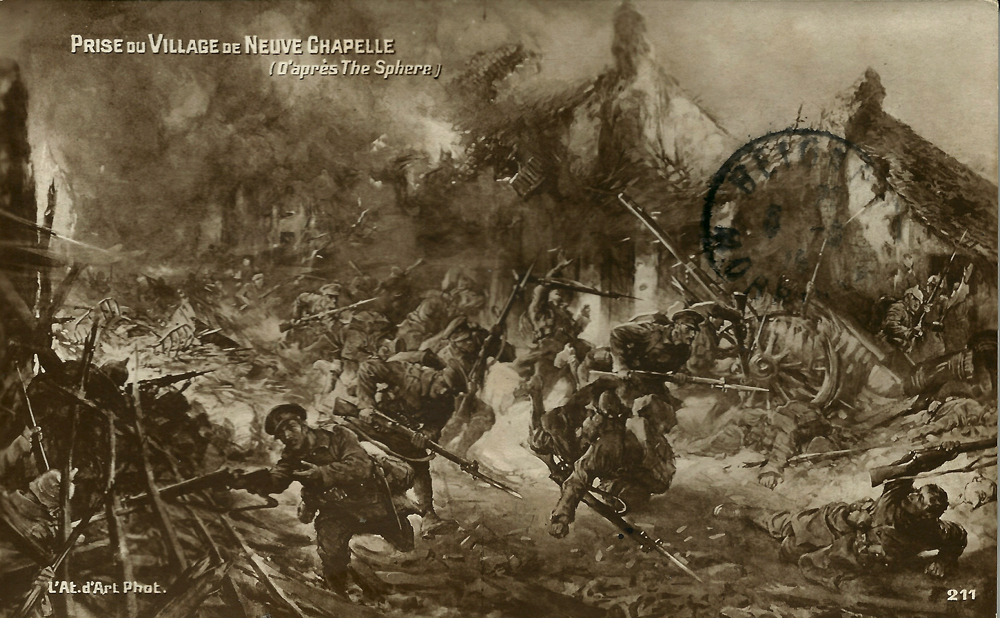 However, the BEF soon found itself facing uncomfortable battlefield realities. Whilst it was true that with sufficient firepower the German line could be breached, mustering the requisite guns and ammunition was no simple matter. The self-congratulatory mood post-Neuve Chapelle masked the fact that in the following weeks the Germans greatly improved their defences whilst the BEF had actually diminished its own artillery strength due to the need to transfer some of its precious stock to supply the Gallipoli campaign. As a result, an attempt to re-run the sudden hurricane bombardment of Neuve Chapelle at the Battle of Aubers Ridge (9 May) was a catastrophic failure. The gunners could barely scratch the strengthened German position and, as a result, the infantry advanced into unbroken wire, unsuppressed defenders and unmerciful fire. The battle was a blood-soaked tragedy that cost the BEF 11,500 casualties for absolutely no gain.
However, the BEF soon found itself facing uncomfortable battlefield realities. Whilst it was true that with sufficient firepower the German line could be breached, mustering the requisite guns and ammunition was no simple matter. The self-congratulatory mood post-Neuve Chapelle masked the fact that in the following weeks the Germans greatly improved their defences whilst the BEF had actually diminished its own artillery strength due to the need to transfer some of its precious stock to supply the Gallipoli campaign. As a result, an attempt to re-run the sudden hurricane bombardment of Neuve Chapelle at the Battle of Aubers Ridge (9 May) was a catastrophic failure. The gunners could barely scratch the strengthened German position and, as a result, the infantry advanced into unbroken wire, unsuppressed defenders and unmerciful fire. The battle was a blood-soaked tragedy that cost the BEF 11,500 casualties for absolutely no gain.
Such was the scale of disaster that the British abandoned hurricane bombardments in favour of slow, methodical shelling that aimed to cause maximum destruction over a period of several days. This method sacrificed surprise for a degree of certainty. Yet it remained ammunition intensive and heavily reliant on accurate, efficient gunnery. The inexperienced and underequipped Royal Artillery could not always meet these requirements.
Even if the bombardment was successful and broke down the German front line defences, the attacking infantry faced a difficult task. The battles of 1915 revealed the unpalatable truth that once infantry had gone over the top they were essentially beyond the control of higher command. Man-portable wireless sets lay in the future and field telephones only reached as far as their lines would allow. Attempts to carry telephones forward in the attack came to naught, for the lines were soon cut by artillery fire and stray bullets. The only way for attacking troops to maintain communications was via runner, but in the chaos of battle this was a slow and unreliable method.
This had two serious tactical implications. Firstly, it was difficult to know where and when to commit reserves. Information slowly trickled back from the front line and was often out-of-date by the time reserves were ready to advance. As a result, fresh soldiers moved into a chaotic, fire-swept battlefield with only a limited idea of their destination or the strength of the opposition they were likely to face. Reserves tended to gravitate towards visible friendly soldiers, but this could drag them off course and embroil them in local actions. Units that continued towards their objective had to struggle through a confusing maze of artillery-ravaged enemy trenches that were often littered with British and German casualties. Furthermore, pockets of enemy resistance could deliver fire from the flanks or launch the sudden counter-attacks for which the German army was so well known. Maintaining the momentum of an assault thus proved exceptionally difficult.
This was exacerbated by the second problem arising from lack of real-time communications. It was almost impossible to direct reactive artillery fire onto new targets in a timely fashion. Therefore, if the attacking infantry encountered unexpected resistance beyond the front line, they could not rely upon their artillery for assistance. This problem was recognised very early in 1915 and attempts were made to overcome it through flags, smoke signals and aerial observation. However, all of these methods proved inadequate. With communications unreliable, efforts were made to carry additional firepower forward in the attack. But machine guns were too heavy and Lewis guns were in short supply, whilst attempts to bring up mountain artillery on mules proved a sad disappointment.
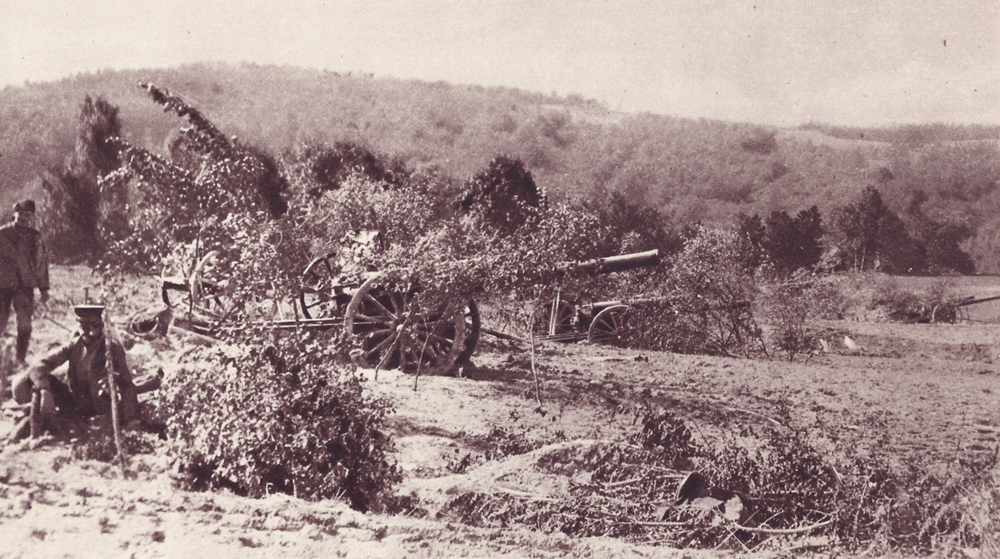 For the whole of 1915 infantry would have to fight forward with the rifle, the bayonet and the hand grenade. Such was the state of the British economy that the BEF did not actually possess a standard pattern of rifle until 1916. Regular and Indian units used the modern Short Lee-Enfield MK III. But most Territorial units relied on the venerable Long Lee-Enfield and the Canadians were equipped with the notoriously unreliable Ross rifle. Yet, the variety of rifles was a minor problem compared to the bewildering assortment of grenades that were issued to the soldiers. The army had gone to war with very small numbers of the Hand Grenade No.1. Unusually, this was a percussion grenade designed to explode on impact rather than a fused grenade designed to explode after a set period of time. Although it possessed a powerful blast, it was difficult to manufacture and its percussion detonator made it a danger to friend and foe alike. Above all, it was never available in sufficient quantity. In the search for effective grenades the Trench Warfare Department developed a cottage industry dedicated to the design and procurement of new weapons. The result was that the BEF found itself equipped with over a dozen types of grenade, each with differing capabilities and many with peculiar quirks. Crucially, all were inferior to the standard German Model 24 grenade, better known as the “Potato Masher” due to its distinctive shape. The inadequacy of British grenades had baleful consequences. General Hubert Gough remembered that at the Battle of Loos:
For the whole of 1915 infantry would have to fight forward with the rifle, the bayonet and the hand grenade. Such was the state of the British economy that the BEF did not actually possess a standard pattern of rifle until 1916. Regular and Indian units used the modern Short Lee-Enfield MK III. But most Territorial units relied on the venerable Long Lee-Enfield and the Canadians were equipped with the notoriously unreliable Ross rifle. Yet, the variety of rifles was a minor problem compared to the bewildering assortment of grenades that were issued to the soldiers. The army had gone to war with very small numbers of the Hand Grenade No.1. Unusually, this was a percussion grenade designed to explode on impact rather than a fused grenade designed to explode after a set period of time. Although it possessed a powerful blast, it was difficult to manufacture and its percussion detonator made it a danger to friend and foe alike. Above all, it was never available in sufficient quantity. In the search for effective grenades the Trench Warfare Department developed a cottage industry dedicated to the design and procurement of new weapons. The result was that the BEF found itself equipped with over a dozen types of grenade, each with differing capabilities and many with peculiar quirks. Crucially, all were inferior to the standard German Model 24 grenade, better known as the “Potato Masher” due to its distinctive shape. The inadequacy of British grenades had baleful consequences. General Hubert Gough remembered that at the Battle of Loos:
In this bitter struggle the bomb was the principal weapon. We were unable to supply our men during this battle with anything approaching a sufficient quantity, and the bombs sent up were clumsy affairs… An old-fashioned and very heavy hand grenade was also supplied to our men. The fuse of this could only be lit by striking it on a piece of emery paper and this was sewn on the man’s left sleeve, but by 8.30 on the morning of the 25th [September] the rain was coming down heavily, the emery paper was soaked and the bomb useless.
As a result the British Army was forced to fight at a distinct disadvantage against its German foes. Indeed, the battlefield reality of 1915 was the BEF was inexperienced, ill-equipped and engaged against a foe of considerable fighting power in exceptionally difficult conditions. The result was, in James Edmonds’ words, that “The enemy undoubtedly had the best of the fighting” and that “Too many of our bravest and best perished, seeking to compensate by valour for lack of experience and shortage of munitions.”
British strategy and BEF operations were shaped by the realities outlined above. Britain lacked the military resources to make a decisive contribution on the Western Front and its leaders were cognisant of the need for more time to train and equip her fledging forces. Yet the country could not afford to stand by whilst its alliance partners battled for national survival. Trapped by this strategic paradox, the BEF was forced to fight in battles for which it was ill-prepared and which proved, in Edmonds’ phrase, “tactically disappointing and strategically disastrous”.


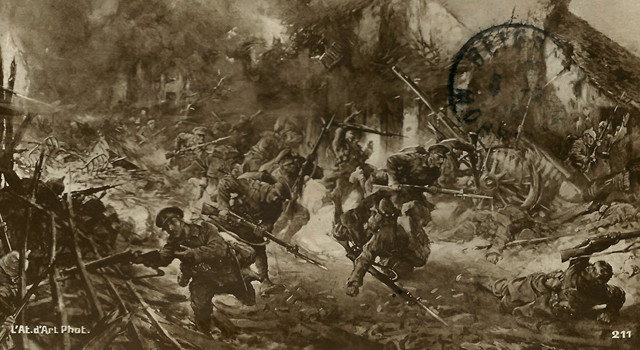
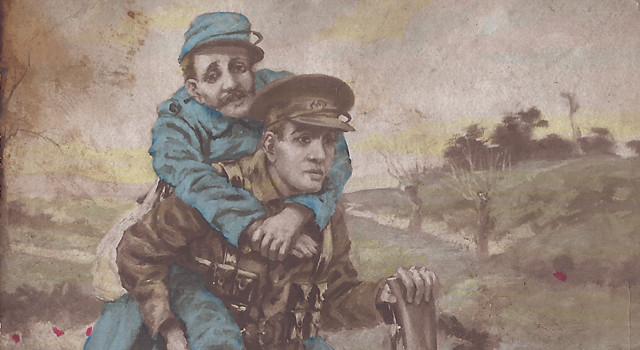
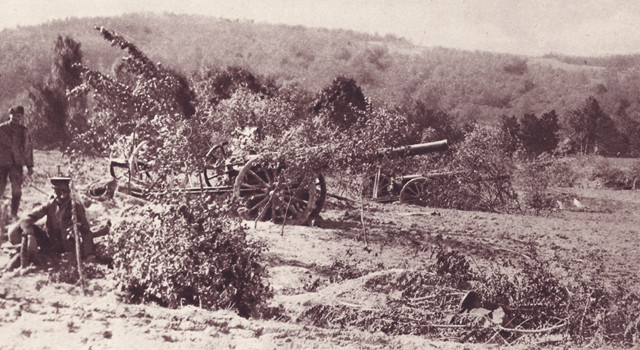

Submit a Comment